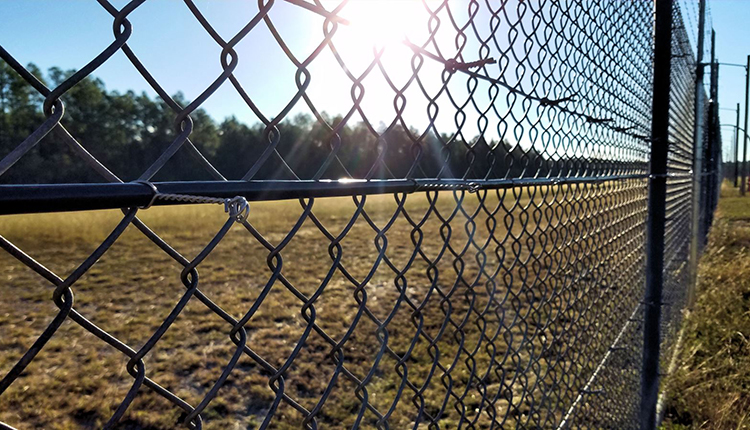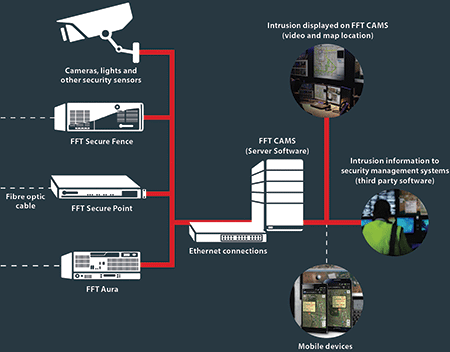The Ultimate Overview to Fiber Optic Protection Systems for Your Company
In an age where safety and security problems are vital for companies, understanding the ins and outs of fiber optic technology can be transformative. This overview describes just how integrating fiber optic security systems not just enhances information protection however also uses advantages like resistance to disturbance and real-time monitoring abilities.
Understanding Fiber Optic Innovation

The core of a fiber optic cable television is composed of a slim glass or plastic center, bordered by a cladding layer that mirrors light back right into the core. Single-mode fibers are developed for long-distance transmission, while multi-mode fibers are appropriate for much shorter distances, often utilized within buildings.
Optical fiber are not just quicker yet additionally more protected than typical electrical wiring. Their integral resistance to electromagnetic interference and the difficulty of touching into the signal without discovery make them a recommended selection for services focusing on data stability and protection. As organizations significantly count on secure and efficient communication systems, understanding fiber optic modern technology becomes important for informed decision-making.
Key Advantages of Fiber Optic Safety
When considering safety choices for an organization, the benefits of fiber optic systems are especially engaging. Firstly, fiber optic modern technology provides exceptional data transmission rates and data transfer ability, making it excellent for managing high-resolution video clip feeds from security electronic cameras. This capacity makes certain that safety and security personnel obtain real-time information, enhancing total response times to possible safety risks.
Moreover, fiber optic cables are inherently immune to electromagnetic disturbance, which can jeopardize the honesty of standard copper-based systems. This resistance guarantees that the information transferred remains secure and uninterrupted, giving a much more reliable safety and security facilities. In addition, fiber optics are much less vulnerable to physical damages, as they are made from glass instead than metal, lowering maintenance expenses and downtime.
Fiber optic systems use improved cybersecurity attributes, consisting of encryption abilities that safeguard sensitive data from unauthorized access. Collectively, these benefits make fiber optic security systems a robust choice for services looking for to enhance their security measures.
Setup Process and Considerations
Taking into consideration the complexities entailed, the installment procedure of fiber optic safety systems needs careful preparation and execution. The preliminary step involves a comprehensive site assessment to identify optimal areas for cabling and devices. This analysis needs to take into consideration ecological elements, existing infrastructure, and prospective susceptabilities.

Furthermore, the installment has to adhere to regional building regulations and industry requirements. This may consist of coordinating with various stakeholders such as structure managers, IT groups, and security employees to make sure seamless integration with existing systems.
Post-installation, strenuous testing is essential to confirm system performance and determine any concerns that may occur. By focusing on these factors to consider throughout the setup process, companies can ensure a durable and efficient fiber optic safety system that fulfills their details security demands.
Latest Innovations in Fiber Optic Protection
Recent innovations in fiber optic innovation have actually considerably boosted the capacities of security systems for organizations. Among the most remarkable advancements is the combination of fiber optic sensors that can discover resonances and intrusions along the border of a facility. These sensors navigate to this site supply real-time monitoring, allowing rapid action to prospective violations.
Additionally, the advancement of dispersed fiber optic sensing modern technology permits the continual monitoring of large areas with a single fiber wire. This get redirected here technique not just reduces installation costs yet also improves the reliability of checking systems by getting rid of the need for several, different sensing units.
In addition, advancements in multiplexing strategies have allowed services to send huge amounts of data over fiber optic networks, improving the abilities of video surveillance systems. High-def video clip feeds can currently be sent out over lengthy ranges without loss of high quality, making certain that security personnel have access to clear and actionable details.
Last but not least, the use of synthetic intelligence (AI) together with fiber optic systems is reinventing danger detection. AI algorithms can evaluate data from fiber optic networks to determine uncommon patterns or actions, enabling proactive safety and security procedures. These developments collectively stand for a substantial leap forward in fiber optic safety and security innovation.
Choosing the Right System for Your Service
Choosing the suitable fiber optic safety and security system for your business is crucial for guaranteeing optimum protection and comfort. To make an enlightened choice, analyze your particular security requirements, taking into consideration aspects such as the size of your premises, the nature of your procedures, and potential susceptabilities.
Begin by reviewing the level of safety called for; as an example, high-risk atmospheres might require sophisticated systems with integrated monitoring learn this here now and invasion discovery capacities. Next, think about scalability; as your organization grows, your safety and security system must can broadening to accommodate boosted demands without considerable overhauls.
In addition, check out the integrity and performance of different systems. Look for carriers with well-known track records and client endorsements that vouch for their service high quality. It's additionally advisable to inquire concerning the modern technology's compatibility with existing facilities, ensuring a seamless combination process.
Conclusion
In conclusion, fiber optic safety and security systems provide a durable remedy for improving service safety and security infrastructures. The most recent developments even more reinforce the efficiency of these systems, ensuring that organizations stay protected and adaptable in an ever-evolving threat landscape.